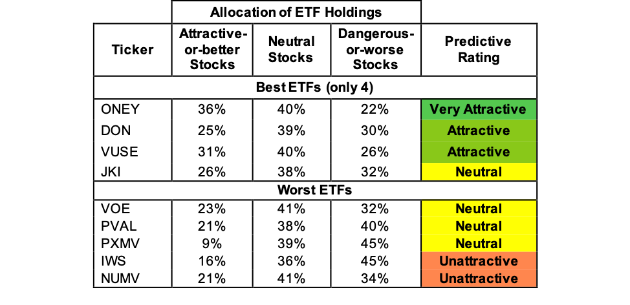[ad_1]
The Mid Cap Value style ranks eighth out of the twelve fund styles as detailed in our Q1’19 Style Ratings for ETFs and Mutual Funds report. Last quarter, the Mid Cap Value style ranked eighth. It gets our Neutral rating, which is based on an aggregation of ratings of 10 ETFs and 182 mutual funds in the Mid Cap Value style. See a recap of our Q4’18 Style Ratings here.
Figure 1 ranks from best to worst the nine Mid Cap Value ETFs that meet our liquidity standards and Figure 2 shows the five best and worst rated Mid Cap Value mutual funds. Not all Mid Cap Value style ETFs and mutual funds are created the same. The number of holdings varies widely (from 30 to 2075). This variation creates drastically different investment implications and, therefore, ratings.
Investors seeking exposure to the Mid Cap Value style should buy one of the Attractive-or-better rated ETFs or mutual funds from Figures 1 and 2.
Our Robo-Analyst technology[1] empowers our unique ETF and mutual fund rating methodology, which leverages our rigorous analysis of each fund’s holdings.[2] We think advisors and investors focused on prudent investment decisions should include analysis of fund holdings in their research process for ETFs and mutual funds.
Figure 1: ETFs with the Best & Worst Ratings
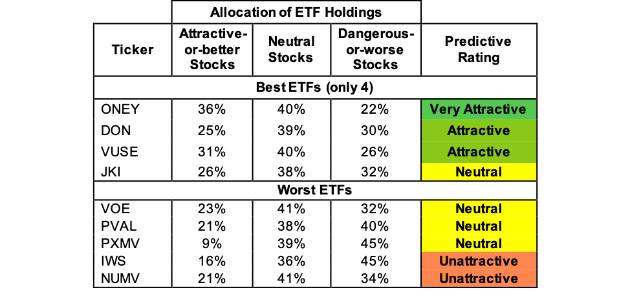 * Best ETFs exclude ETFs with total net assets less than $100 million for inadequate liquidity.
* Best ETFs exclude ETFs with total net assets less than $100 million for inadequate liquidity.
Sources: New Constructs, LLC and company filings
First Trust Multi Cap Val AlphaDEX ETF (FAB) is excluded from Figure 1 because its total net assets (TNA) are below $100 million and do not meet our liquidity minimums.
Figure 2: Mutual Funds with the Best & Worst Ratings – Top 5
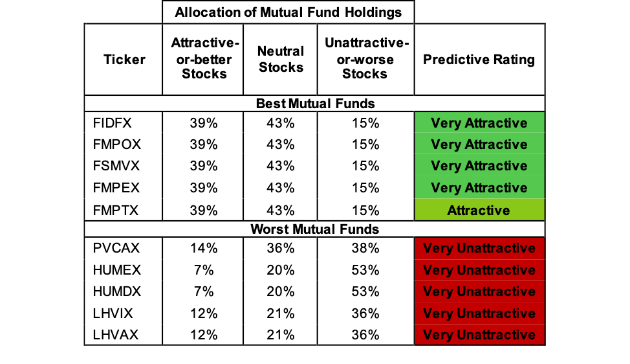 * Best mutual funds exclude funds with TNA less than $100 million for inadequate liquidity.
* Best mutual funds exclude funds with TNA less than $100 million for inadequate liquidity.
Sources: New Constructs, LLC and company filings
Fidelity Devonshire Trust: Fidelity Mid Cap Value K6 Fund (FCMVX) is excluded from Figure 2 because its TNA are below $100 million and do not meet our liquidity minimums.
SPDR Russell 1000 Yield Focus ETF (ONEY) is the top-rated Mid Cap Value ETF and Fidelity Advisor Mid Cap Value Z (FIDFX) is the top-rated Mid Cap Value mutual fund. Both earn a Very Attractive rating.
Nuveen ESG Mid-Cap Value ETF (NUMV) is the worst rated Mid Cap Value ETF and Linde Hansen Contrarian Value A (LHVAX) is the worst rated Mid Cap Value mutual fund. NUMV has an Unattractive rating and LHVAX has a Very Unattractive rating.
The Danger Within
Buying a fund without analyzing its holdings is like buying a stock without analyzing its business and finances. Put another way, research on fund holdings is necessary due diligence because a fund’s performance is only as good as its holdings’ performance. Don’t just take our word for it, see what Barron’s says on this matter.
PERFORMANCE OF HOLDINGs = PERFORMANCE OF FUND
Analyzing each holding within funds is no small task. Our Robo-Analyst technology enables us to perform this diligence with scale and provide the research needed to fulfill the fiduciary duty of care. More of the biggest names in the financial industry (see At BlackRock, Machines Are Rising Over Managers to Pick Stocks) are now embracing technology to leverage machines in the investment research process. Technology may be the only solution to the dual mandate for research: cut costs and fulfill the fiduciary duty of care. Investors, clients, advisors and analysts deserve the latest in technology to get the diligence required to make prudent investment decisions.
Figures 3 and 4 show the rating landscape of all Mid Cap Value ETFs and mutual funds.
Figure 3: Separating the Best ETFs from the Worst Funds
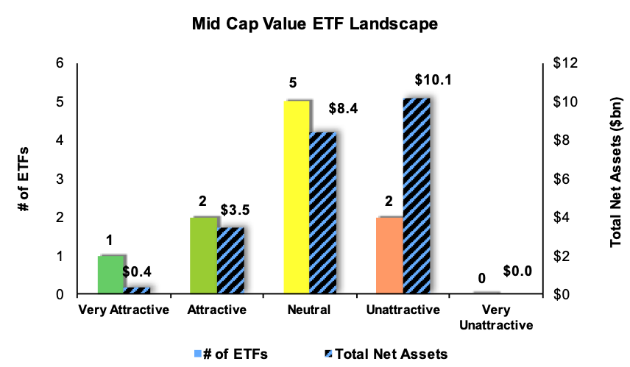 Sources: New Constructs, LLC and company filings
Sources: New Constructs, LLC and company filings
Figure 4: Separating the Best Mutual Funds from the Worst Funds
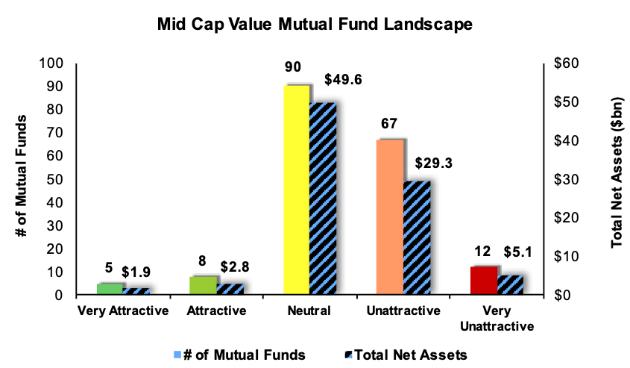 Sources: New Constructs, LLC and company filings
Sources: New Constructs, LLC and company filings
This article originally published on January 28, 2019.
Disclosure: David Trainer and Kyle Guske II receive no compensation to write about any specific stock, style, or theme.
[1]Harvard Business School features the powerful impact of our research automation technology in the case New Constructs: Disrupting Fundamental Analysis with Robo-Analysts.
[2]Ernst & Young’s recent white paper “Getting ROIC Right” proves the superiority of our holdings research and analytics.
Disclosure: I/we have no positions in any stocks mentioned, and no plans to initiate any positions within the next 72 hours. I wrote this article myself, and it expresses my own opinions. I am not receiving compensation for it. I have no business relationship with any company whose stock is mentioned in this article.
[ad_2]
Source link Google News

